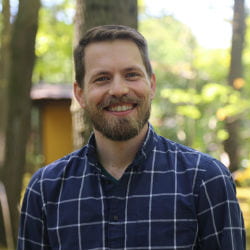Drive-Thru Pedagogy Blog
Pick up something practical.
Easing into Digital Humanities in Your Teaching
July 12, 2024 • Paul Vierthaler
Integrating the digital humanities into your classes needn’t be a complex affair, and it certainly does not require reconceiving yourself as a “digital humanities scholar.” Over the years I have seen fear among instructors about integrating digital components into their humanities courses, even among instructors who are highly motivated by digital innovations. Fortunately, various easy-to-use platforms are readily available to help you incorporate the digital humanities into your teaching praxis.
Students live in an increasingly digital world, and integrating digital humanities into our classrooms provides a platform for them to seriously consider the implications of the digital world on human culture. The public humanities, 3D modeling, computationally aided reading, and map creation all offer different yet accessible inroads into the digital humanities, and assignments using these methods are easy to integrate into any class.
My go-to assignment modality for nearly any type of course I teach–whether it is a literature, culture, or history class–is based on the public humanities. I ask students to collaboratively create a public-facing digital exhibit using an online content management system. There are several platforms for such an exercise, and my personal preference is Omeka S (which is remarkably easy to set up and install using a service like Reclaim Hosting).
To structure the exhibit, I ask students to consider several questions:
What are we studying in this class, and why is it important?
What changes when we engage with objects in a digital context?
What information is important to collect about our objects?
Why is “curation” an important aspect of creating a dataset?
When is exhaustive description a bad thing?
How and why should we put these objects in front of the broader public?
I have students work through a series of scaffolded assignments to help them build the requisite understanding needed for creating digital exhibits. We begin with the group exercise of designing a schema to describe our objects, focusing on the characteristics that are most useful in describing the object. We also consider what gets left out when we condense our object description into a tabular format. When you describe a map, for example, what important facts are not represented? This might include a description of the color palette and its likely motivation.
Students next find an individual object and use the schema to describe it. We then return to consider deficiencies in our schema and evaluate any corrective measures we need to take. Once students have all created a set of objects for the exhibit, they come back together to create an exhibit that ties all of the different objects together.
Finally, we return to ask a set of follow-up questions about the entire process:
Did we learn anything unexpected?
Functionally, we just designed a database. Looking at databases now, how might the design goals of the creators affect what we can learn from it?
To what extent can a designer’s own parameters, outlook, or biases shift the apparent nature of the data?
Does the knowledge that your project is public-facing change how you think of it/create it?
This type of assignment is just one of many that can easily fit into classes. Whether it is turning to tools like Omeka S or delving into other frameworks, I highly encourage instructors to start including digital materials in their classrooms.
© 2024 Paul Vierthaler. ![]() https://orcid.org/0000-0002-2135-9499
https://orcid.org/0000-0002-2135-9499
The text of this work is licensed under a Creative Commons CC-BY 4.0 International License.
Meet the Author
Paul Vierthaler
Assistant Professor, East Asian Studies, Princeton University
Paul is an assistant professor of East Asian Studies at Princeton University, where he teaches about late imperial Chinese literature and interdisciplinary data science. He formerly taught Chinese Studies at William & Mary, and he works extensively with the digital humanities in both research and teaching. Learn more at pvierth.com.
